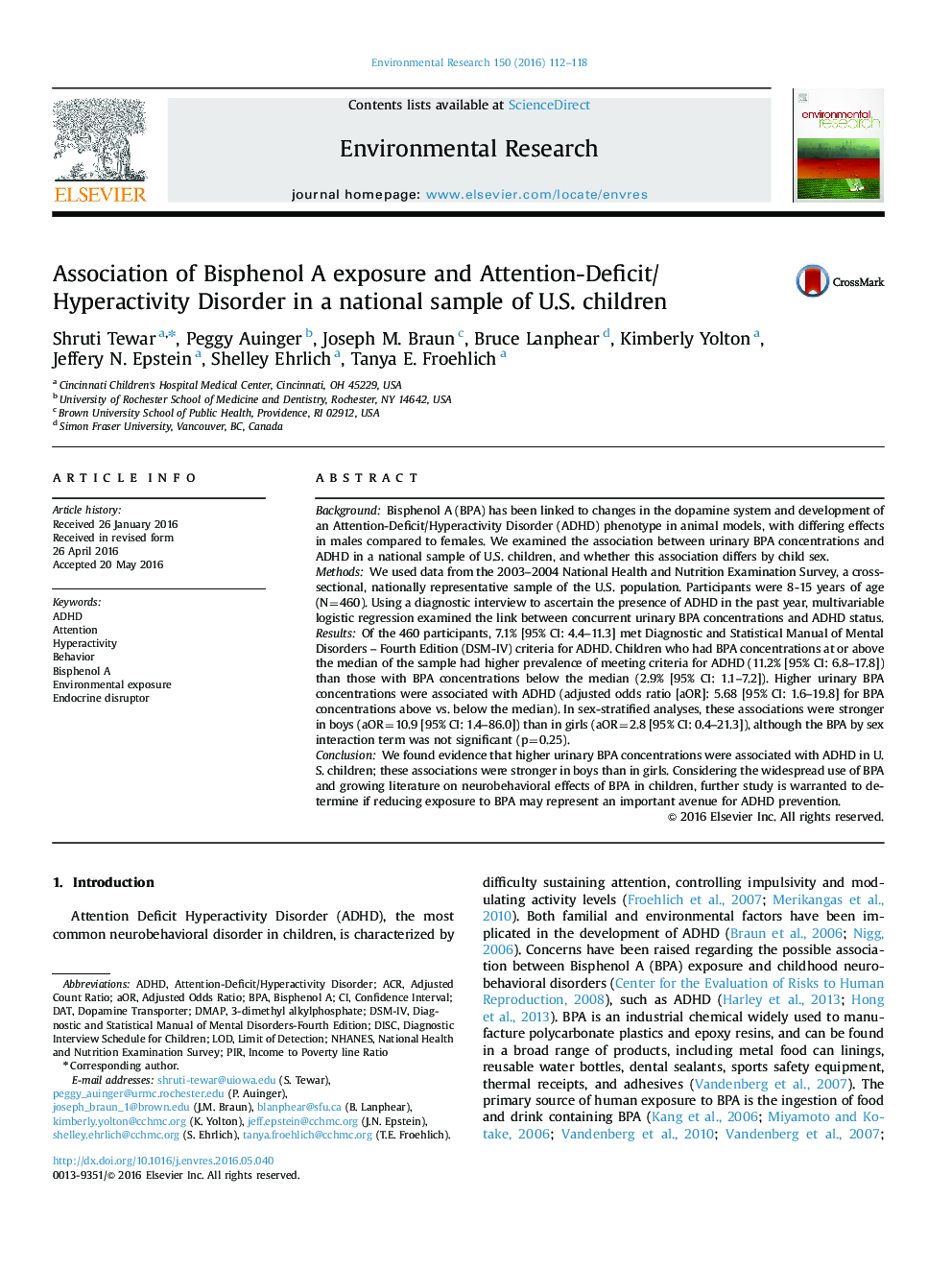| Article ID | Journal | Published Year | Pages | File Type |
|---|---|---|---|---|
| 6350950 | Environmental Research | 2016 | 7 Pages |
Abstract
We found evidence that higher urinary BPA concentrations were associated with ADHD in U.S. children; these associations were stronger in boys than in girls. Considering the widespread use of BPA and growing literature on neurobehavioral effects of BPA in children, further study is warranted to determine if reducing exposure to BPA may represent an important avenue for ADHD prevention.
Keywords
BPADISCDSM-IVACRNHANESDATDMAPAORAttention-Deficit/Hyperactivity DisorderDopamine transporterNational Health and Nutrition Examination SurveyDiagnostic Interview Schedule for ChildrenBisphenol APirHyperactivityADHDEnvironmental exposureAttentionLOD یا Limit of detectionDiagnostic and Statistical Manual of Mental Disorders-Fourth EditionBehaviorconfidence intervallimit of detectionendocrine disruptoradjusted odds ratio
Related Topics
Life Sciences
Environmental Science
Health, Toxicology and Mutagenesis
Authors
Shruti Tewar, Peggy Auinger, Joseph M. Braun, Bruce Lanphear, Kimberly Yolton, Jeffery N. Epstein, Shelley Ehrlich, Tanya E. Froehlich,
